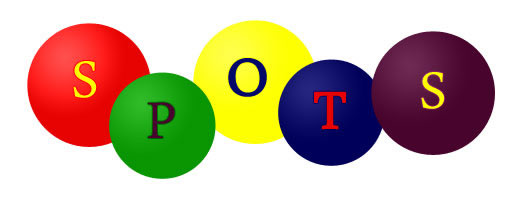
Interactive Metronome therapy
INTERACTIVE METRONOME
Interactive Metronome at SPOTS is delivered as a neuro-intensive retraining program. The evidence base practice behind this delivery system comes from the research performed by Hannah Grossman and Mary E. Brenner who work with the Boys and Girls Club of Greater Oxnard. These IM providers have established a protocol for intervention that yields positive efficient results. They have efficacy results that span several years, and they have a well established program that began in a small private school setting and expanded into the “At Risk” program of the Boys and Girls Club of Greater Oxnard because of the results of their IM protocol programming. The IM certified program supervisor who established our protocol at SPOTS has consulted with the program developers for the Hardy Brain Gym Camp in California, and established a similar protocol for our neuro-intensive retraining program.
Interactive Metronome (IM) was developed in the early 1990’s to help children with learning and developmental disorders. It is now being used by a wide variety of professionals to impact patients from Early Childhood Intervention programs to Skilled Nursing Home facilities. Research indicated that IM positively impacts patients of all ages and wide range of disabilities. Since we are a pediatric clinic our primary focus is on pediatric patients; however, we have provided services using this IM program to adults (teachers and parents) based on the results they observed from their students and/or child.
How It Works: IM challenges children and adults to synchronize a range of hand and foot exercises to precise computer-generated tones heard through headphones. (The therapy is based on the regular clicking of the metronome used by musicians to help them mark time and keep a beat.) The patient attempts to synchronize the auditory beat with repetitive motor actions – tapping feet, clapping hands, balance tasks, bilateral coordination movements, motor sequence movements. The brain’s temporal processing is impacted. IM’s auditory-visual input provides constant feedback (with motor movements) at the millisecond level to promote synchronized timing in the brain. This impacts the efficacy of the entire sensory-motor pathway for sensory input, cognitive processing, and motor output for functional life skills. IM Exercises can be customized and involve a hierarchy of increasingly complex and precisely timed motor movements intertwined with gradually higher & faster cognitive processing, attention and decision-making. It is the only neuro-motor therapy tool that can be used successfully with all patients across the therapy spectrum, even those that require total hands-on assistance due to cognitive and/or physical impairments. It can be used with a wide age range of patients from very young to elderly.
Impact We Have Documented: We have been providing IM as a neuro-intensive program since 2012. We have recommended the therapy intervention for a variety of diagnoses: lack of motor coordination; ADHD; autism spectrum disorders; auditory procession disorders; dyslexia (and other ready difficulties/delays); and dysgraphia. Research supports the use of IM intervention for these diagnoses. Some of the results we have seen from participation in the neuro-intensive program we provide are:
1. Decrease in medication needs for ADHD.
2. Dramatic improvement in reading fluency, reading comprehension, and expressive/receptive language skills.
3. Significant improvment in processing speed for academic and functional tasks.
4. Increase in motor coordination, balance, agility, stamina, endurance and motor planning.
5. Decrease in anxiety and stress related behavior modulation difficulties.
6. Significant improvements in self-generation of ideas, thoughts, and the ability to put them down on paper. (Seen both with writing and drawing skills)
7. Improvement in fine motor integration skills and visual-motor coordination skills.
8. Significant improvement in auditory processing and visual attention skills.
9. Decrease in impulsive, reactive, and aggressive behaviors.
10. Improvement in following multi-step directions, and quality of task completion.
11. Positive changes in mood, peer/adult/parent interactions, and improved self efficacy for independent participation in challenging task.
12. Significant improvement with focus, attention, sustained attention, and reduction of attention to internal/external distractors.
Jennifer Suggs, MOT, OTR, SIPT Cert
IM Certified
Cynthia L. Montana, MOT, OTR
IM Certified
